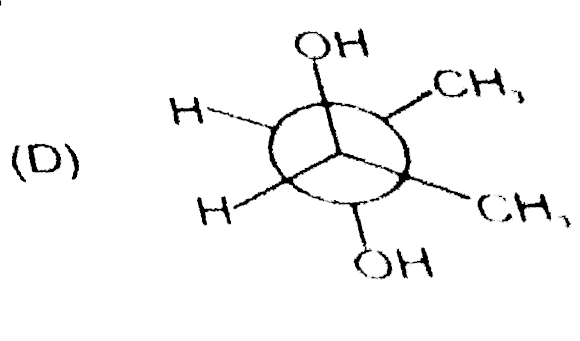Which is the most stable conformer among the following ?
A

B

C

D

Video Solution
Text Solution
Structure (c) is optically active & most stable due to hydrogen bonding.
|
Updated on:21/07/2023
Related Playlists
- BOOK - RESONANCE ENGLISHCHAPTER - STEREOISOMERISMEXERCISE - EXERCISE (PART 1 SECTION (A))5videos
STEREOISOMERISM
- BOOK - RESONANCE ENGLISHCHAPTER - STEREOISOMERISMEXERCISE - EXERCISE (PART 1 SECTION (B))2videos
STEREOISOMERISM
- BOOK - RESONANCE ENGLISHCHAPTER - SOLUTIONSEXERCISE - Advabced Level Problems (PART-2)35videos
SOLUTIONS
- BOOK - RESONANCE ENGLISHCHAPTER - STRUCTURAL IDENTIFICATIONEXERCISE - Advanced level Problems (Part-III)12videos
STRUCTURAL IDENTIFICATION
Similar Questions
Which is the most stable carbocation among the following ?
View SolutionWhich is the most stable conformer among the given conformers ?
View SolutionThe most stable carbanion among the following is
View SolutionThe most stable free radical among the following is
View SolutionMost stable carbanion among the following is
View SolutionThe most stable radical among the following is
View SolutionThe most stable radical among the following is :
View SolutionMost stable radical among the following is
View SolutionThe most stable complex among following is
View SolutionMost stable radical among the following is :
View Solution


